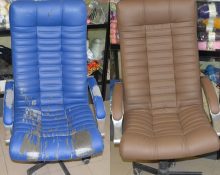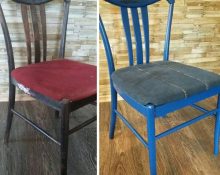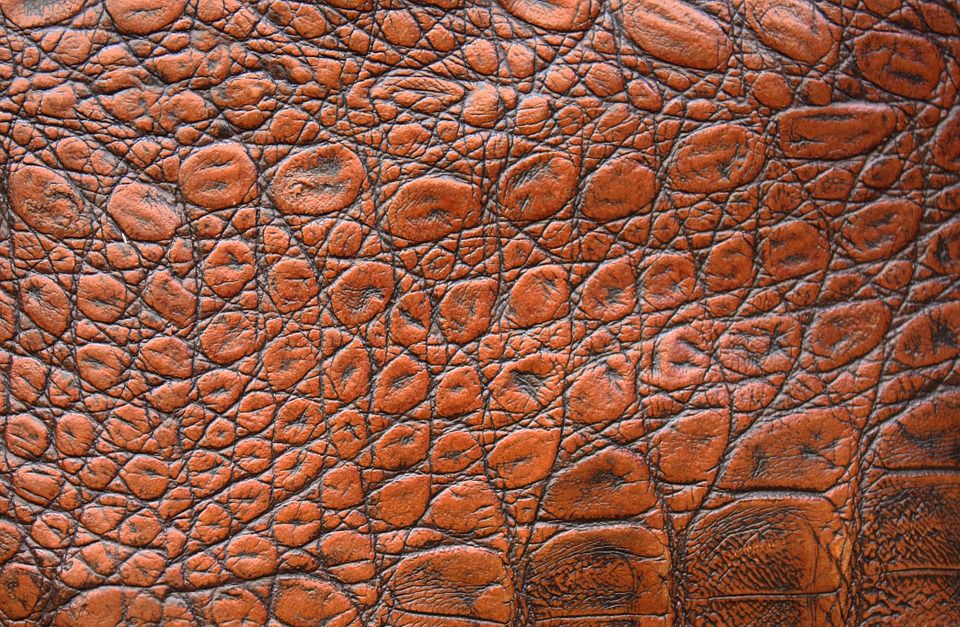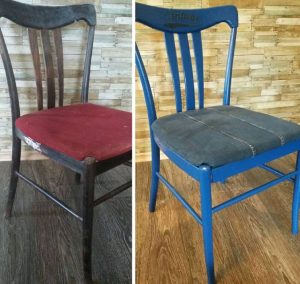
prom.ua
If you've been wanting to update your favorite old furniture and give it a new look, then replacing the worn-out upholstery on your chairs will help breathe new life into them and will also help them fit into the updated interior of your room after renovation.
Changing the upholstery on chairs with your own hands is not difficult.
How to upholster chairs?
- Select upholstery fabric (for fabric recommendations, see below);
- Purchase filler that is used to replace (if necessary) chair seats. Sheet foam rubber 40-50 mm, with a density of 30-50 kg/m3, is best suited for this;
- And also - padding polyester, which is laid between the foam rubber and the fabric so that the upholstery lies evenly, without wrinkles.
To change the upholstery on chairs at home, we will also need the following tools:
- Hammer
- Screwdriver
- Pliers
- Fabric scissors
- Tailor's chalk
- Furniture stapler
- PVA glue
So, covering chairs with your own hands includes the following steps:
- The very first thing we need is to remove all the old staples and nails from our chair. For this we use a flathead screwdriver and pliers.
- Remove the upholstery from the chair seat.
- We don’t throw away the removed fabric! It will be useful to you as a pattern for cutting out new upholstery. It needs to be carefully smoothed out, getting rid of folds, placed on our new fabric, outlined with tailor's chalk and carefully cut out. You need to cut from the front side in one direction of the threads. If you choose a material with a pattern, then you need to position it so that the pattern is directed towards the back of the chair (up). Otherwise, you will have to measure the dimensions of the seat yourself and make patterns. In this case, you will need to add 5 cm on each side to secure the upholstery.
- Let's examine the frame of our chair. If there are cracks in it, they are filled with sealant or PVA glue. The loose frame needs to be tightened.
- Let's start cutting out the seat from the filler.
- Carefully coat the foam rubber of the new seat with PVA glue and glue it to the plywood base. We also carefully lubricate the sides of the foam with glue.
- We cover the foam rubber with padding polyester and use a stapler to secure it to the base.
- We lay our new upholstery on the chair and secure it with furniture nails and staples. In this case, the fabric must be stretched so that there are no wrinkles or folds on it, and it must be secured with nails and staples in the same places where they were previously.
Now you know how to change the upholstery on a chair with your own hands.
How to change the upholstery on a chair if the chair model has a back?
As with seat restoration, we remove removable parts and check the frame for cracks. Then we also glue the foam rubber to the base and cover it with upholstery fabric, securing it with a stapler.
The only difference is that the edging is attached to the upholstery fabric. This is done to cover the staples that secure the new trim to the backrest.
Types of fabrics used for upholstery of chairs.
As you can see, upholstering a chair with your own hands is quite accessible to everyone. The main thing is the right choice of fabric, which must be durable and wear-resistant, so that the updated chairs can serve you longer and at the same time maintain their cleanliness and beauty.
Types of fabrics recommended for use:
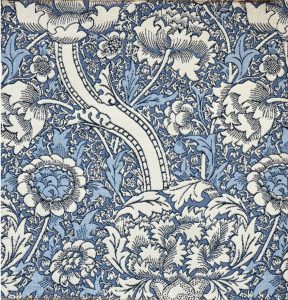
gobelen.be
- - This is a durable upholstery material. This is an ideal option for restoring antique furniture. Can be used for upholstering chairs both at home and in the office.
- Velvet fabric is soft, but strong and durable. True, it is difficult to clean.
- Chenille is a very practical fabric that is resistant to mechanical abrasion.
- Jacquard fabric - the composition is cotton with the addition of polyester or nylon to ensure strength.
- Vinyl is an artificial leather that is strong and reliable material and, in addition, has water-repellent properties. Ideal for your kitchen.
- Genuine leather looks very beautiful, rich, but it also has its drawbacks - scratches and other defects often appear on it.


 0
0
